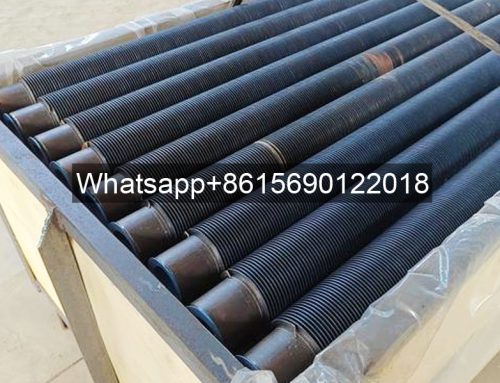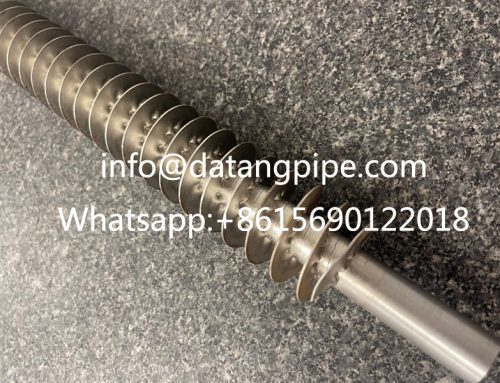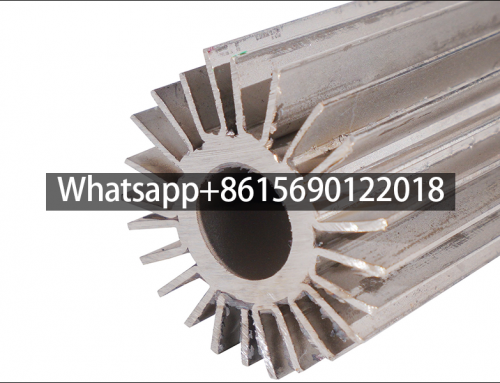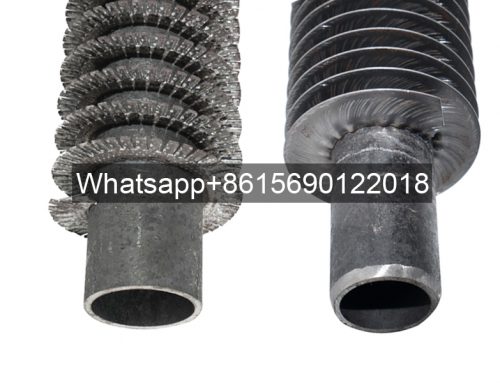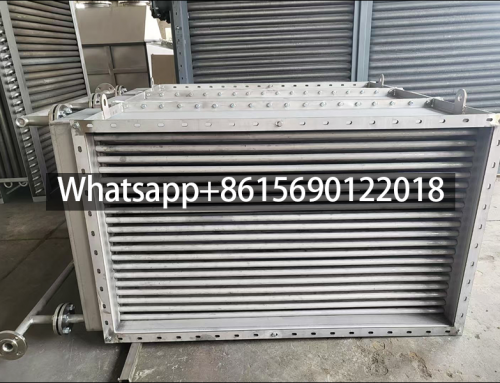Heat Transfer Mechanisms and Production of Finned Tubes for Industrial Drying Applications
1. Fundamental Heat Transfer Principles
Thermal conduction initiates the process when thermal media (steam/hot water) flow through the tube interior. Heat transfers from the media to the inner tube wall through molecular-level energy exchange across temperature gradients, governed by Fourier’s Law of heat conduction. Metal tubes (typically steel/aluminum) facilitate rapid conduction due to high thermal conductivity (e.g., 50-400 W/m·K depending on material).
Convection dominates external heat transfer:
- Natural convection occurs when heated air rises passively, creating circulation patterns around fins.
- Forced convection uses fans/blowers to accelerate airflow, enhancing heat transfer coefficients by 3-5× compared to natural convection.
2. Fin-Enhanced Heat Transfer Mechanisms
Surface Area Expansion
| Parameter | Typical Range | Effect on Performance |
|---|---|---|
| Fin height | 10-20 mm | ↑ Surface area 5-15× base tube |
| Fin density | 200-400 fins/m | ↑ Heat transfer 30-60% |
| Fin thickness | 0.3-1.0 mm | Balances strength vs. conductivity |
| Fins amplify heat exchange area, enabling 20-30% faster drying versus smooth tubes. |
Turbulence Generation
Fin geometries disrupt laminar airflow, creating vortices that:
- Break thermal boundary layers (↓ resistance 40-60%)
- Enhance convective coefficients by 25-50%
- Ensure uniform temperature distribution (±2°C variance).
3. Production Process
Material Selection
- Base tube: Carbon steel (OD 25-50 mm) or stainless steel (304/316) for pressure integrity.
- Fins: Aluminum (lightweight, high conductivity) or copper (premium applications).
Manufacturing Methods
- Extrusion (Aluminum fins):
- Heated aluminum billets (450-500°C) forced through dies under 800-1200 tons pressure
- Forms seamless fin-tube bond with thermal resistance.
- High-frequency welding (Steel fins):
- Automated welding at 10-50 kHz frequency
- Weld strength ≥90% base material strength.
- Surface treatment:
- Galvanization (zinc coating) for corrosion resistance
- Anodization (aluminum fins) to enhance emissivity.
4. Application-Specific Performance
High-Temperature Drying (e.g., Ceramics)
- Operating range: 200-350°C with stainless steel base tubes
- Radiation contributes 15-25% total heat transfer.
Low-Temperature Drying (e.g., Pharmaceuticals)
- Precise control at 40-80°C via reduced media flow rates
- Extended finned surfaces compensate for lower ΔT.
Key Performance Metrics
| Parameter | Range/Value | Unit |
|---|---|---|
| Heat transfer coefficient | 30-100 (forced convection) | W/m²·K |
| Thermal conductivity | Aluminum: 237 Steel: 16-50 |
W/m·K |
| Temperature tolerance | ±1.5-3.0 | °C |
| Pressure resistance | ≤2.5 (steam systems) | MPa |
Finned tubes achieve 15-30% energy savings in drying systems through optimized heat transfer efficiency while maintaining product quality integrity.
Heat transfer mechanism of finned tubes in drying applications
1. Basic heat transfer principle of finned tubes
Heat conduction: Finned tubes are usually made of metal, which has good thermal conductivity.
In drying applications, the heat medium flows inside the finned tube, and the heat is first transferred from the heat medium to the inner wall of the finned tube by heat conduction. There is a temperature difference between the heat medium and the tube wall. According to Fourier’s law, heat will be transferred along the direction of the temperature gradient. The rate of heat conduction is proportional to the temperature difference between the heat medium and the tube wall, the thermal conductivity of the tube wall, and the contact area.
Heat convection: After the heat is transferred from the inner wall of the finned tube to the outer wall, it is transferred to the surrounding dried material or air through heat convection. Outside the tube, due to the temperature difference between the air or material and the outer wall of the finned tube, natural convection or forced convection is formed.
In the case of natural convection, the hot air rises due to thermal expansion, and the surrounding cold air is supplemented to form a natural circulation of air, transferring heat to the surface of the material.
In forced convection, air flow is accelerated by fans and other equipment, so that heat is transferred to the material more quickly. In industrial drying workshops, fans are often used to force air to pass around finned tubes to strengthen heat convection, improve heat transfer efficiency, and speed up the drying of materials.
2. Ways to enhance heat transfer with finned tubes
Increase heat transfer area: The fins on finned tubes significantly increase the heat transfer area. The fins are usually sheet-shaped or needle-shaped and are closely arranged on the outer wall of the finned tube. More heat transfer area means more heat can be transferred from the finned tube to the surrounding environment.
Taking the drying of metal sheets as an example, the fins on the finned tubes expand the heat transfer area several times or even dozens of times. This allows heat to contact the metal sheet being dried more widely, improves the efficiency of heat transfer, and shortens the drying time.
Promote air disturbance: The presence of fins can also promote air disturbance. When air flows through the fins, the shape and arrangement of the fins will cause turbulence in the air, destroying the boundary layer formed by the air on the fin surface. The heat transfer coefficient between the air and the fin surface in the turbulent state is greatly improved, thereby enhancing the effect of heat convection.
During the wood drying process, the fins of the finned tube cause the air to form turbulence around it, which accelerates the transfer of heat from the fins to the wood surface, and also accelerates the evaporation and diffusion of moisture on the wood surface, improving the drying quality.
3. Heat transfer characteristics of finned tubes in different drying scenarios
High temperature drying scenario: In high temperature drying applications, such as ceramic drying, the heat medium temperature is high. At this time, the heat conduction and heat convection processes of the finned tube are very strong. The heat medium quickly transfers a large amount of heat to the tube wall and quickly transfers it to the surface of the ceramic product through heat convection.
Due to the high temperature environment, the viscosity of the air is reduced, and heat convection is more likely to occur, but at the same time, higher requirements are placed on the high temperature resistance of the finned tube. Finned tubes made of high temperature resistant alloy materials can stably transfer heat at high temperatures to ensure the smooth progress of ceramic drying.
Low temperature drying scenario: For some temperature-sensitive materials, such as drug drying, it is necessary to carry out at low temperatures. In this scenario, the heat transfer of the finned tube is relatively slow. The heat medium temperature is low and the heat conduction rate is relatively small. However, by rationally designing the structure of the finned tube and selecting the appropriate heat medium flow rate, the heat transfer can be precisely controlled.
For example, by using hot water at a lower temperature as the heat medium, increasing the length of the finned tube and the number of fins, and increasing the heat transfer area, it can still meet the needs of low-temperature drying of medicines and ensure that the quality of the medicines is not affected.


